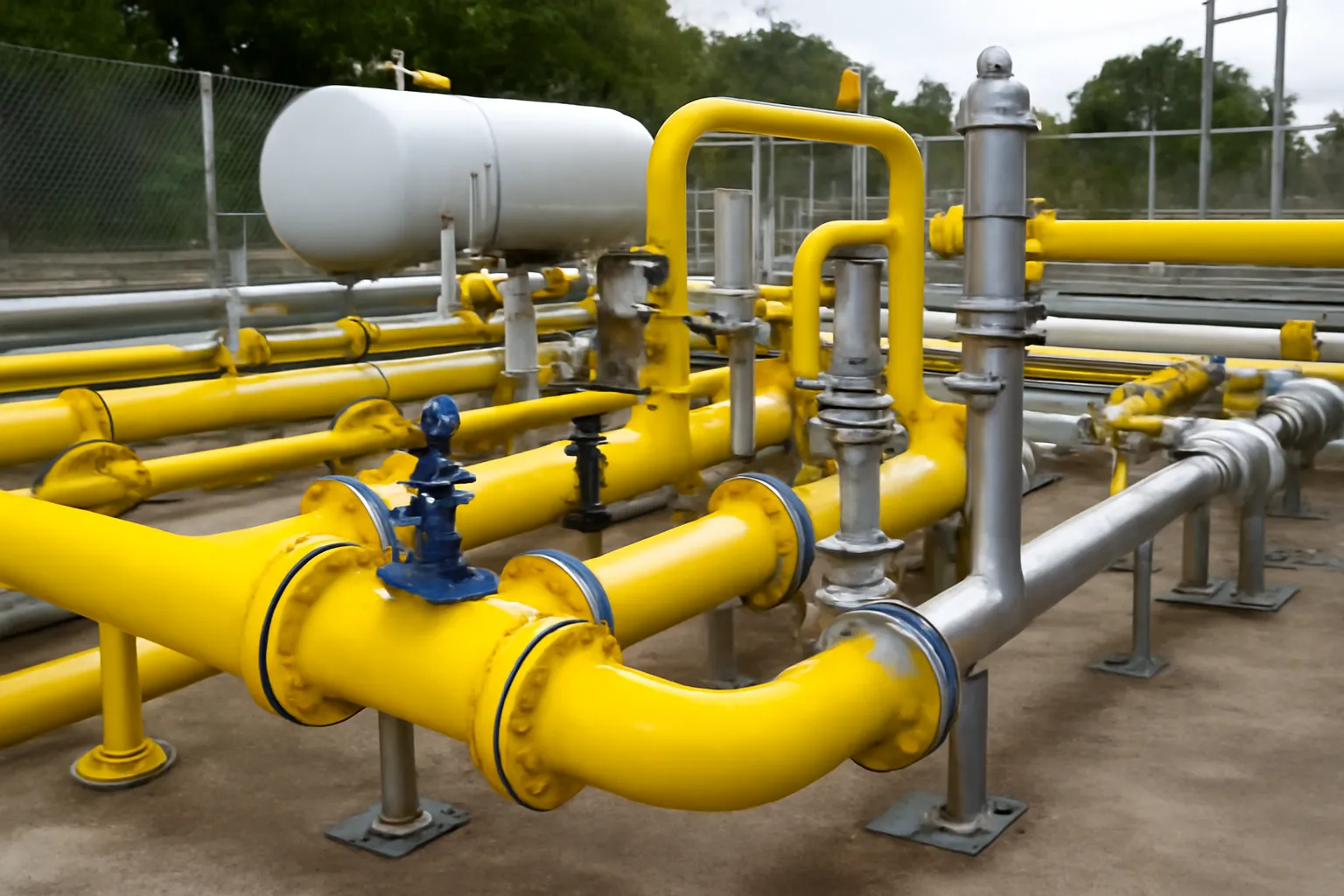Are you curious about how LPG pipeline businesses operate and the intricacies of LPG piping network projects? In this article, we explore the essential components of such projects and their vital role in the energy sector. Keep reading to learn more!
The liquefied petroleum gas (LPG) industry plays a critical role in modern energy systems, providing an essential fuel source for both residential and commercial use. One of the most important components of this industry is the LPG pipeline network, which is responsible for transporting gas safely and efficiently across vast distances. This infrastructure ensures that consumers receive uninterrupted gas supplies. In this article, we will delve into the complexities of LPG piping network projects, focusing on their importance, design, and the steps involved in establishing a safe, reliable, and sustainable LPG pipeline business.
LPG Pipeline Business: A Vital Industry Backbone
The LPG pipeline business serves as the backbone of many energy supply chains, ensuring that this versatile fuel reaches the homes, businesses, and industries that rely on it. Typically, LPG is used for heating, cooking, and powering appliances, making it a key source of energy across the globe.
Key Aspects of the LPG Pipeline Business
-
Economic and Environmental Impact
The LPG pipeline business offers both economic and environmental benefits. By using pipelines, LPG companies can transport large volumes of gas over long distances more efficiently compared to other methods such as road or rail transport. This helps reduce transportation costs and, consequently, the price of LPG for consumers. -
Safety Standards
Due to the highly flammable nature of LPG, safety is paramount in the pipeline business. The industry adheres to stringent standards to prevent leaks, explosions, and other risks. For example, pipelines are fitted with monitoring systems to detect and respond to issues like pressure drops or leaks. These safety systems are tested regularly to ensure their reliability. -
Supply Chain Integration
The LPG pipeline business is closely integrated with other stages of the supply chain. From the extraction of LPG at gas fields to its distribution to consumers via pipelines, the entire process requires precise coordination. Companies must manage storage, transportation, and delivery while ensuring that gas quality and pressure remain within safe parameters.
Want to know more about how LPG pipelines ensure safe delivery of energy?
👉 Learn more about LPG pipeline safety 👈
LPG Piping Network Project: The Roadmap to Safe Gas Distribution
A successful LPG piping network project requires a well-thought-out plan and a series of well-coordinated steps. The design and construction of an LPG pipeline network are complex and involve various stakeholders, including engineers, environmental consultants, and regulatory bodies. Below, we explore the essential stages of an LPG piping network project.
Essential Stages of an LPG Piping Network Project
-
Project Planning and Feasibility Study
Before any work begins, thorough planning is essential to assess the technical and economic feasibility of the project. This phase involves identifying the pipeline route, understanding land acquisition issues, and ensuring compliance with local regulations. A comprehensive study will also evaluate the environmental impact of the project and any potential risks. -
Design and Engineering
Once the project plan is approved, detailed designs are created. The engineering team uses advanced software and tools to design the pipeline’s layout, determine the materials required, and plan the installation process. The design phase also includes assessing factors like terrain, climate, and potential obstacles that might affect the pipeline’s integrity and performance. -
Construction and Installation
The construction phase involves digging trenches for the pipeline, installing the pipes, and connecting them to various gas distribution points. This phase can take several months to complete, depending on the complexity and size of the project. During this time, workers must ensure that safety protocols are followed to prevent accidents and leaks. -
Testing and Commissioning
Once construction is completed, rigorous testing is conducted to ensure that the pipeline system is safe, functional, and leak-free. Pressure tests and inspections are carried out to confirm the integrity of the pipeline before it is commissioned for use.
Interested in the detailed processes involved in LPG piping projects?
👉 Click to explore the complete process 👈
Gas Distribution and Management: Ensuring Continuous Supply
Efficient gas distribution and management are crucial to the success of an LPG piping network. Once the network is in place, companies must focus on managing the flow of gas to meet consumer demand while ensuring the safety of the system.
Challenges in Gas Distribution and Management
-
Pressure Regulation
One of the biggest challenges in LPG distribution is maintaining the right pressure levels across the network. If the pressure is too high or too low, it can result in dangerous situations like leaks or system failures. Constant monitoring and automatic pressure regulation devices are vital to managing the distribution system effectively. -
Leak Detection and Maintenance
Leak detection is a key aspect of LPG gas distribution systems. Modern technology allows for real-time monitoring of the pipeline to detect small leaks before they become significant issues. Routine maintenance, including inspections and cleaning of valves, pumps, and other equipment, ensures the ongoing reliability of the system. -
Meeting Consumer Demand
As demand for LPG fluctuates due to seasonal or economic factors, gas distribution networks must be flexible enough to handle these changes. This means that operators need to carefully manage gas storage and ensure that pipelines are capable of accommodating peak demand periods.
Want to dive deeper into how LPG gas management is handled on a daily basis?
👉 Discover more about gas management techniques 👈
Conclusion
In conclusion, the LPG pipeline business and the related piping network projects are critical to ensuring the safe and efficient delivery of energy to homes, industries, and businesses worldwide. From planning and construction to gas distribution and management, each step of the process plays a vital role in maintaining the reliability and safety of the system. As the demand for energy continues to grow, so too will the need for sophisticated and well-managed LPG pipelines, ensuring that this essential fuel reaches consumers in a safe, timely, and cost-effective manner.
“The way to get started is to quit talking and begin doing.” – Walt Disney
As we move toward a more energy-conscious world, these projects will only become more important, requiring innovative solutions and meticulous planning.






